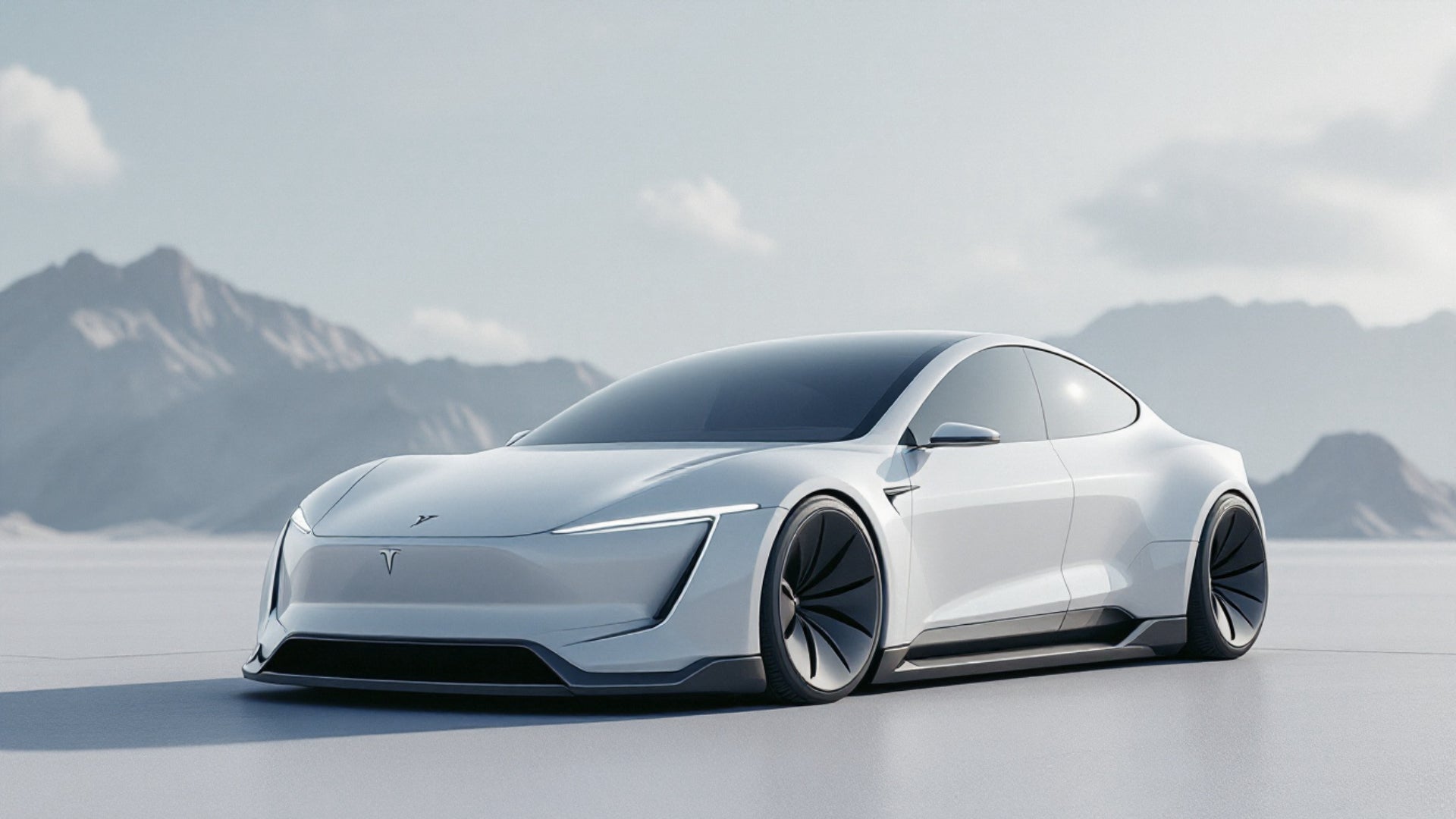The Tesla Model Q has become the EV rumor of the year: small, affordable, and engineered to finally bring Tesla to a much wider slice of the market. In this deep-dive I’ll walk through what the Model Q is reported to be, why it matters, how it might be built and priced, what to expect in terms of range and features, and how it could reshape the electric-car landscape. This is an evidence-backed synthesis of the latest reporting, analyst notes, and industry chatter with a focus on facts that have surfaced publicly and sensible inferences where data is still thin.
Quick summary
The Tesla Model Q is widely reported to be Tesla’s planned compact, lower-cost EV aimed at mass-market buyers. Analysts and multiple outlets place its target price well below Tesla’s mainstream models and suggest production could start in the near future, with several sources pointing to mid-2020s timelines. If Tesla nails cost, range, and manufacturing scale, the Model Q could be a volume driver and a major catalyst for EV adoption in price-sensitive markets.
Why Tesla is chasing a car like the Model Q
Tesla’s lineup over the last decade has skewed toward mid-price and premium segments (Model S, Model 3, Model X, Model Y). But electrification at scale needs a truly affordable, mass-market vehicle. The Tesla Model Q is the company’s attempt in rumors and filings to create a compact EV that can be built cheaply, delivered globally, and push ownership costs down so that more buyers can switch from internal-combustion cars. Expect the Model Q strategy to emphasize simplified production, shared parts with existing platforms, and battery/chemistry choices that prioritize cost per mile rather than headline range. Analysts say Tesla’s goal is to produce “available for everyone” vehicles and the Model Q is the symbol of that ambition.
Read More :
What the reports actually say
Public reporting on the Tesla Model Q is a mix of company comments, analyst notes, supplier leaks, and industry write-ups. Key claims that appear consistently across multiple outlets:
- Tesla is working on or planning a compact, lower-cost model targeted at roughly the sub-$30k–$40k band (pricing has shifted across reports).
- Internally it has been referred to in some reporting by codenames and described as smaller and lighter than the Model 3, with manufacturing cost reductions as a primary objective.
- Analysts (including some big banks) have put weight behind the idea that such a model could contribute materially to Tesla’s deliveries once production ramps.
Those are the high-level, repeatable points. Beyond them there are educated guesses about dimensions, battery types (LFP vs. higher-density chemistries), and where Tesla might manufacture the car; those should be treated as plausible but not confirmed until Tesla itself posts official specs.
Design & Packaging of Tesla Model Q
From the pictures and mockups circulating online and from the general direction Tesla has taken with other models, the Tesla Model Q is expected to embrace the brand’s minimalist aesthetic but scaled down:
- Compact footprint: multiple write-ups estimate a length around ~3.9–4.1 meters (roughly 155–161 inches) comparable to small hatchbacks and compact SUVs in many markets. That would make the Tesla Model Q more city-friendly than the Model 3 or Model Y.
- Weight & materials: to hit an aggressive cost target Tesla is likely to use lighter body structures, simpler interiors, and fewer high-cost components but still retain the Tesla cockpit feel (large center screen, over-the-air updates, and software-first experience).
- Platform sharing: expect heavy reuse of proven Tesla modules (drive units, certain structural pieces) to keep R&D and tooling costs down. Sharing components with the Model 3 platform is a common scenario in reporting.
That combination compact body + shared components is the fast path to a lower price while preserving the Tesla software and safety DNA buyers expect.
Read More :
- Top Instagram Tools You Need in 2025 to Grow Your Brand
- Apple iPhone 17 Pro Max: Unveiling Exciting Features
Battery, Range and Performance Expectations
Range and battery chemistry are the balancing act for any affordable EV: higher range needs bigger batteries (raising cost), while cheaper batteries may limit appeal. Early reporting suggests:
- Battery strategy: the Tesla Model Q will probably leverage lower-cost chemistries such as LFP (lithium iron phosphate) for base trims to lower cost and improve longevity, with higher-energy cells reserved for bigger-range variants. LFP is already a staple for Tesla’s more price-sensitive models in some regions because it’s cheaper and less reliant on nickel/cobalt supply chains.
- Range targets: realistic expectations for base versions are in the 200–300 mile (320–480 km) WLTP/combined range band, depending on the market and final battery pack sizing. Tesla’s efficiency gains could push usable range higher than competitors at similar pack sizes, but final numbers are unannounced.
- Performance: Tesla is likely to offer at least one trim that balances peppy acceleration with efficiency; however, the performance focus for Tesla Model Q will probably be modest compared with Tesla’s performance-oriented trims (it’s a mass-market car, not a halo vehicle).
Remember: until Tesla publishes official pack capacities and range tests, these are evidence-backed projections rather than hard specs.
Price and Positioning of Tesla Model Q
Price is the newsmaker. Different sources have floated numbers, and the range varies depending on currency, incentives, and region:
- Conservative/credible reports suggest Tesla is targeting a price that is “affordable” for many buyers often referenced as sub-€30,000 or under $30k in some writeups while other outlets push estimates closer to the mid-$30k mark once taxes and local spec changes are factored in. The band reflects differing assumptions on final spec, included features, and local incentives.
If Tesla can deliver a Model Q at the lower end of those ranges, the company would have a truly mass-market product and could change purchasing calculus for many shoppers who currently rule out EVs on price.
Manufacturing of Tesla Model Q
Scaling an affordable car means scaling factories and supply chains. Public reporting and analyst notes point to several possibilities for Model Q production:
- Use of existing lines: Tesla likes to reuse and repurpose existing factories where possible. Some reporting indicates early production could be integrated into current lines with modified tooling.
- Global production footprint: to keep logistics and import costs down, Tesla could build the Model Q in multiple regions China, Europe, and the U.S. have all been mentioned as likely candidates. Local production also helps Tesla tap local incentives and avoid tariffs.
- Ramp timing: a number of analyst notes and press items have stated that initial builds might appear in the mid-2020s, with larger volume ramping into the following year. Analysts at major firms have publicly modeled various ramp scenarios that show meaningful volume contribution within a year or two of launch.
The big practical challenge is balancing a very aggressive cost target with the realities of supply chains and the capital investment required to produce a high-quality vehicle at scale.
Read More :
Safety, Software and the Tesla Experience
Tesla’s brand value isn’t just hardware it’s the software, updates, and driver assistance tech. Expect the Tesla Model Q to carry the same core strengths:
- Autopilot and driver-assistance: Tesla is likely to include standard Autopilot features and potentially as an option enhanced driver assistance suites. Software upgrades (paid or free) will let Tesla add features over time.
- Safety: Tesla typically engineers robust passive safety into its cars; the Model Q will have to meet crash standards in every market it targets, which places constraints on weight and structure but also a high bar for occupant protection.
- Over-the-air updates and integration: the Model Q will almost certainly support Tesla’s OTA model for software, maps, and UI refinements, plus integration with the Tesla app for charging, climate preconditioning, and more.
These software advantages are a major part of Tesla’s value proposition and will help the Model Q feel modern even if the interior hardware is cost-optimized.
Competition and market impact
A genuinely affordable Tesla would force competitors to respond. Global automakers are already offering compact EVs at varying price points, and the Tesla Model Q would sit squarely in that increasingly crowded segment. Key impacts to watch:
- Market pressure: incumbents would have to improve their EV package (range, charging network, software) to remain competitive. Tesla’s strengths in charging infrastructure and resale value could give the Model Q an advantage.
- Volume dynamics: if Model Q reaches the rumored price bands and hits production targets, it could drive a big uplift in Tesla deliveries a scenario several analysts have modeled. This would also put downward pressure on average transaction prices in the EV segment.
Ultimately, the Model Q’s success will hinge on how well Tesla balances cost, perceived quality, and delivery timelines.
Ownership costs, charging and real-world ownership
Lower purchase price is only part of the equation. Total cost of ownership for the Tesla Model Q would be shaped by:
- Energy costs and efficiency: Tesla’s vehicle efficiency and access to fast-charging can make operating costs competitive with conventional cars.
- Maintenance & warranty: EVs generally have lower routine maintenance needs; Tesla’s warranty terms and service network will be critical in new markets.
- Charging: if Tesla leans into its charging ecosystem, Model Q owners will benefit from the NACS network and home-charging compatibility, further simplifying ownership. Tesla’s energy business developments and accessory ecosystem support this trend.
Buyers should weigh incentives, local electricity prices, and expected annual mileage when evaluating the Model Q’s true cost advantage.
Risks and Unknowns
No story about a future model would be complete without a reality check. Key risks for the Tesla Model Q include:
- Timing risk: automotive ramps are hard; supply chain hiccups or changes in corporate priorities can delay production. Some community discussion already cautions buyers not to rely on rumored launch dates.
- Margin pressure: delivering a cheap car without sacrificing quality is difficult; Tesla must either accept thinner margins or find new efficiencies in manufacturing and supply.
- Competitive response: legacy automakers and nimble startups are targeting affordable EV segments aggressively; Tesla will not have the field to itself.
Those unknowns mean prospective buyers and investors should treat early reports as promising but tentative until Tesla issues official specs and pricing.
When will the Tesla Model Q arrive?
There’s no verified date from Tesla as of this writing. Multiple reports and analyst notes have suggested production could begin in the mid-20200s with volume ramping later but public estimates have shifted as new data emerges. In other words, the Tesla Model Q is plausibly imminent, but buyers should wait for official confirmation and specifications from Tesla before making purchase or investment decisions.
Why the Tesla Model Q matters
The Tesla Model Q represents more than just a new car; it’s a test of whether Tesla can translate its high-end tech and brand into a truly mass-market product. If Tesla can hold to a competitive price, deliver reliable manufacturing at scale, and keep the software advantage intact, the Model Q could accelerate EV adoption in markets where price is the primary barrier.








